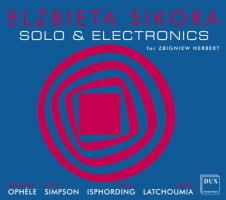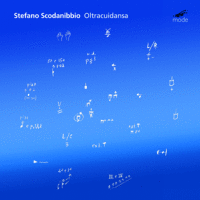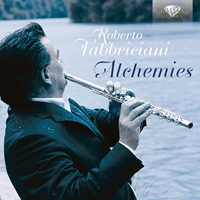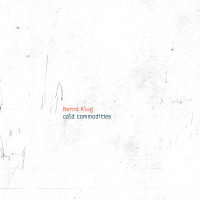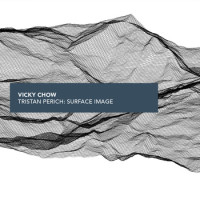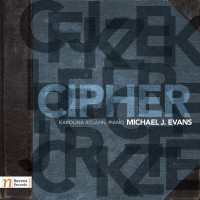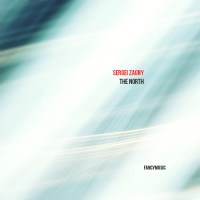EA Bucket 22: Including Solo Instruments
|
Grant Chu Covell [September 2015.]
Elżbieta SIKORA: The Head of Orpheus II (1981-82)1; Suite for cello and tape (1990)2; Suite II for harpsichord and tape (1993)3; Reflets irises (2005)4. Emmanuelle Ophèle1 (fl), Marc Battier1 (electronics), David Simpson2 (vlc), Gośka Isphording3 (harpsichord), Wilhem Latchoumia4 (pno). DUX 0679a (1 CD) (http://www.dux.pl/). Sikora’s expert duets for instrument and tape are not conversations but confrontations. Her method appears to involve serializing episodes, rarely relying upon repetition or traditional development. Many remarkable gestures show just once. The strongest of these four is undoubtedly Suite II for harpsichord and tape. From the opening thunder crack to the passing vehicles, the antique instrument must declare itself competent to succeed. The first Suite is more like a conversation, as cello answers synthesized blips and pulses. I reflexively dread a composition for flute and tape; however, Orpheus’ Head is ever surprising and eventful. Part of the appeal is that the flute fearlessly hugs the low register, and both flute and tape frequently back off to let the other slow down the pace. Despite the title, a story eludes. Reflets irises for piano plus tape travels through ten contrasting sections as the predominantly flashy piano intersects material ranging from purely synthetic to manipulated concrète. (I note greedily that Latchoumia has recorded Nono and Ferrari’s pieces for piano and electronics.)
Stefano SCODANIBBIO: Oltracuidansa (1997, rev. 2001). Stefano Scodanibbio (cbs). mode records 225 (1 CD) (http://www.moderecords.com/). Scodanibbio’s bass squirms and growls over ornate tape (originally 8-channel but here squished into stereo) derived wholly from contrabass sounds with little manipulation except for some reverb. The slowly progressing unbroken stretch (58:14) shuns the traditional bowed sound. There are light wispy noises and the suggestion of whales. It takes the throaty plucking common to a jazz combo to recall what set the work into motion. Scodanibbio admitted: “[a]mong my works for contrabass, this is the one which is the most primal exploration, ‘becoming animal.’”
Roberto FABBRICIANI: Alchemies (2000-04). Roberto Fabbriciani (fl). Brilliant Classics 9446 (1 CD) (http://www.brilliantclassics.com/). In four absorbing parts, Mercury, Salt, Sulphur and The Imponderable (Paracelsus’ names for the base elements: water, earth, air and fire), Fabbriciani combines flutes and all manner of extended playing techniques with tape to manufacture colorful panoramas suggesting dangerous primeval mysteries. Electronics and distorted flutes, including the breathy and ultra-low hyperbass flute, depict this eerie cosmos. Sulphur offers the most familiar flute airs, but Fabbriciani and his backdrop make them fierce and unwelcoming. Play it loud to frighten the neighborhood pets.
“Cold Commodities.” Bernd KLUG: Var. comps. Bernd Klug (cbs, e-bass). Innova 902 (1 CD) (http://www.innova.mu/). Captured in one Brooklyn apartment during a single month (September 2013), bassist Klug melds crackerjack extended technique with his mundane physical environment to create fables. Immediately one encounters a small-room ambiance with varying weights of interference. I suspected multi-tracking, yet Krug’s brief note avows no such effects. “Guest artists” include local electronic gadgets and the sonficiation of mundane documents. Suffering with Mexican Music portrays Klug valiantly competing against a neighbor’s unwanted noise. New York is the city that never sleeps, and thus Rauschgespraech’s chalky bass captures being startled awake at 2:00 a.m. by vulgar street sounds. The longest track, Traces Within a 1-Bedroom Apartment, explores the instrument’s rich harmonics.
Tristan PERICH: Surface Image (2013). Vicky Chow (pno). New Amsterdam Records NWAM060 (1 CD) (http://www.newamrecords.com/). There are times in Perich’s 63-minute opus when the piano is subsumed under glaring bursts of electronic pulsing, like a flashing neon sign competing with the sun. The digipak photo reveals Chow at the piano, flanked by 40 dinner-plate-sized speakers. I suspect each speaker emits just one pitch at a time, and are controlled so they phase and hum against the piano’s minimalist cascading patterns. The work’s grand scale offers deliberate sections gradually changing, but both electronics and piano get a rest now and again. The work reaches for something monumental, despite its garage-floor technology.
Michael J. EVANS: Cipher (2013). Karolina Rojahn (pno), Kyle Milner (voice). Navona NV5962 (1 CD) (http://www.navonarecords.com/). All variations are but a type of distortion, no? Evans explores artistic fidelity, taking Mendelssohn’s text (a weakly translated letter excerpt) and music (a few bars from a Song without Words) through an eclectic series of variations. Part one opens upon distorted speech whose noise clears away gradually upon repetition only to reveal jumbled words. Part two is 24 variations plus fugue on the opening of Mendelssohn’s Op. 19, No. 1. The variations traverse styles on their way to the present via ragtime, Satie and Glass without shaking free of the original. The last text statement overlaps with the piano theme to unite the parallel treatments. The concluding fugue is an apotheosis, fragmenting the theme and passing through different states. Rojahn emphasizes Mendelssohn’s inherent intimacy, and as virtuosic as the 52-minute variations become, like the original letter, they are presented as if for a modest audience. Additionally, the packaging includes a clear cd-sized code wheel so that we may solve a simple cipher and grab further music from the Internet.
Sergei ZAGNY: The North (2011-13). Sergei Zagny (sop recorder). FANCYMUSIC FANCY028 (1 CD) (http://www.fancymusic.ru/). From six unassuming sheets of paper, Zagny constructs a curious edifice, “music for breathing normalization.” The unit of measure in The North is a long whole note, here produced by soprano recorder, sometimes ornamented with preceding appoggiaturas. Each page contains 12 voices with 12 measures. Zagny proposes different ways to execute his score where instrument choice and coordination would lead to different results. This mix from the composer’s own 2002 tapes convincingly argues for homogeneity, although the dozen reedy block flutes imperfectly coalescing around dissonant chords suggests a homemade elixir. As the work progresses, an active listener may try to anticipate unisons or predict the clusters’ makeup. I found it hard to listen passively. Indeed Zagny warns upfront: “[t]his music will not benefit everyone.”
[More EA Bucket, Grant Chu Covell]
[Previous Article:
String Theory 12: Violin (with Piano, Mostly)]
[Next Article:
Review: Farinelli and the King]
|
